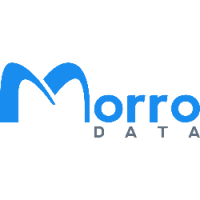3 Steps of Cloud Migration
3 Steps of Cloud Migration
Easy Steps of Cloud Migration
By structuring and prioritizing, cloud migration can be taken in steps and with clear business objectives.
Most businesses either have migrated some parts of their IT environment to the cloud, or are thinking about it. The effort and complexity of cloud migration should not be under-estimated. However, the benefits of cloud migration can be well worth the efforts if the project is managed with a good understanding of business objectives and fitting solutions. The scope and the exact steps taken depend on which of the following is the goal for the cloud migration:
- A cloud-only infrastructure
- A hybrid cloud infrastructure where cloud enhances the whole IT environment
Unless your original IT footprint is small, it is quite complex and maybe unwarranted to migrate the complete IT infrastructure to the cloud. In fact, most companies that have done cloud migration take the hybrid approach where the cloud becomes only part of their total IT environment. What runs in the cloud is the “lift and shift” of some on premises IT components but now with better scalability and reliability. Decisions about what’s migrated to the cloud are made according to which components can take advantage of the cloud the most.
Step 1: Migrate Your Active Directory Domain Controller
The following table shows the three main IT components that are targets of cloud migration – the domain controller, the file servers, and computing, in that order of priority. Domain Services, being such a critical component of an IT environment, should be considered as one of the first components to migrate to the cloud for reasons of reliability and accessibility. A cloud-based Domain Services is actually more convenient for businesses with multiple locations by eliminating the need of syncing domain controllers at multiple sites. Azure AD Domain Services functions the same as traditional domain controllers except it’s hosted in the cloud.
| Step | What to Migrate | Cloud Equivalent | Priority |
Complexity |
|
1 |
AD Domain Controller | Azure AD
Domain Services |
High | Medium complexity for cloud setup and cloud-to-site connections |
|
2 |
File Servers |
Azure / AWS file services
or Global File Services by Nasuni NetApp Panzura |
High if
multi-sites |
Global file services needed for multi-site collaboration Low to high complexity depending on vendor and number of sites, most have tools to manage data migration |
| 3 | Computing | Enterprise Workloads in
AWS / Azure End User Computing: Cloud VDI |
Depends on business needs |
Both workloads and EUC are high complexity projects that require careful planning and justification |
Step 2: File Server Migration
File servers are different from cloud object storage such as Amazon S3 or Azure Blob which lack many of the file system features. By file servers we mean using the cloud for primary storage, not cloud backup which is already a mainstream practice and is not true migration. File servers are a prime target for cloud migration because of the reliability and scalability of the cloud. The benefits of moving primary storage to the cloud are immediate and many: relief of the traditional IT backup workloads, unlimited storage capacity, no more hardware and software maintenance, etc. However, the challenge of using the cloud for primary storage comes when users at multiple locations need to collaborate with each other. Companies such as Morro Data, Nasuni, NetApp (from the Talon acquisition), and Panzura use cloud file systems to handle file sync and file lock in real time for multisite collaboration. Given the new normal of the distributed teams these days, remote team collaboration should be a top consideration. Microsoft also has Azure Files and Azure File Sync but the syncing is only every twenty-four hours so it’s really just replication. Azure File Sync also still requires the presence of Windows file servers on premises so there is no reduction of IT footprint or complexity.
Step 3: Optional Migration Component
Computing is the third and optional component of cloud migration. The two categories of computing, Enterprise Workloads and End User Computing, serve very different business purposes. For Enterprise Workloads, AWS EC2 and Azure are the two major cloud computing platforms where large enterprises and many software startups have deployed their servers, including databases. This is a very large space and is outside the scope of this article. End User Computing, including user’s PC running Windows or macOS, can also be hosted in the cloud. This approach is called Cloud VDI (Virtual Desktop Infrastructure) as opposed to the on premises virtual desktop solutions from Citrix or Nutanix. However, IT architects need to be aware that Cloud VDI, although having some merits, is really going against the grain of today’s rapid advancement of desktop technologies being delivered to the end users at a fast pace and with little added cost. I am talking about 4K resolution multiple displays, high capacity ultrafast storage like PCIe 4.0 NVMe SSD that is faster than any storage that Cloud VDI can provide, and whatever AI-based UI such as Augmented Reality and voice commands. Is virtualization good for the desktop space? For this reason along with cost consideration, I would think long and hard before embarking on any EUC migration.
Summary
I hope that this article has brought some structure to the unwieldy topic of cloud migration. With the many benefits of the cloud, selective cloud migration is only a matter of time. And with a good high level understanding of cloud migration, I hope you will have a productive project that is also a journey of learning and appreciating new technologies.
By Paul Tien, Founder & CEO of Morro Data
